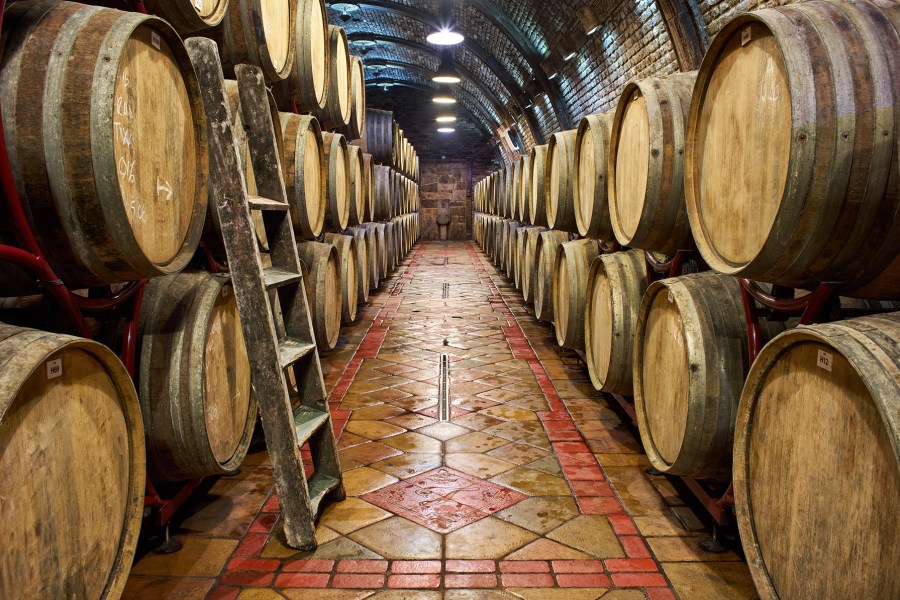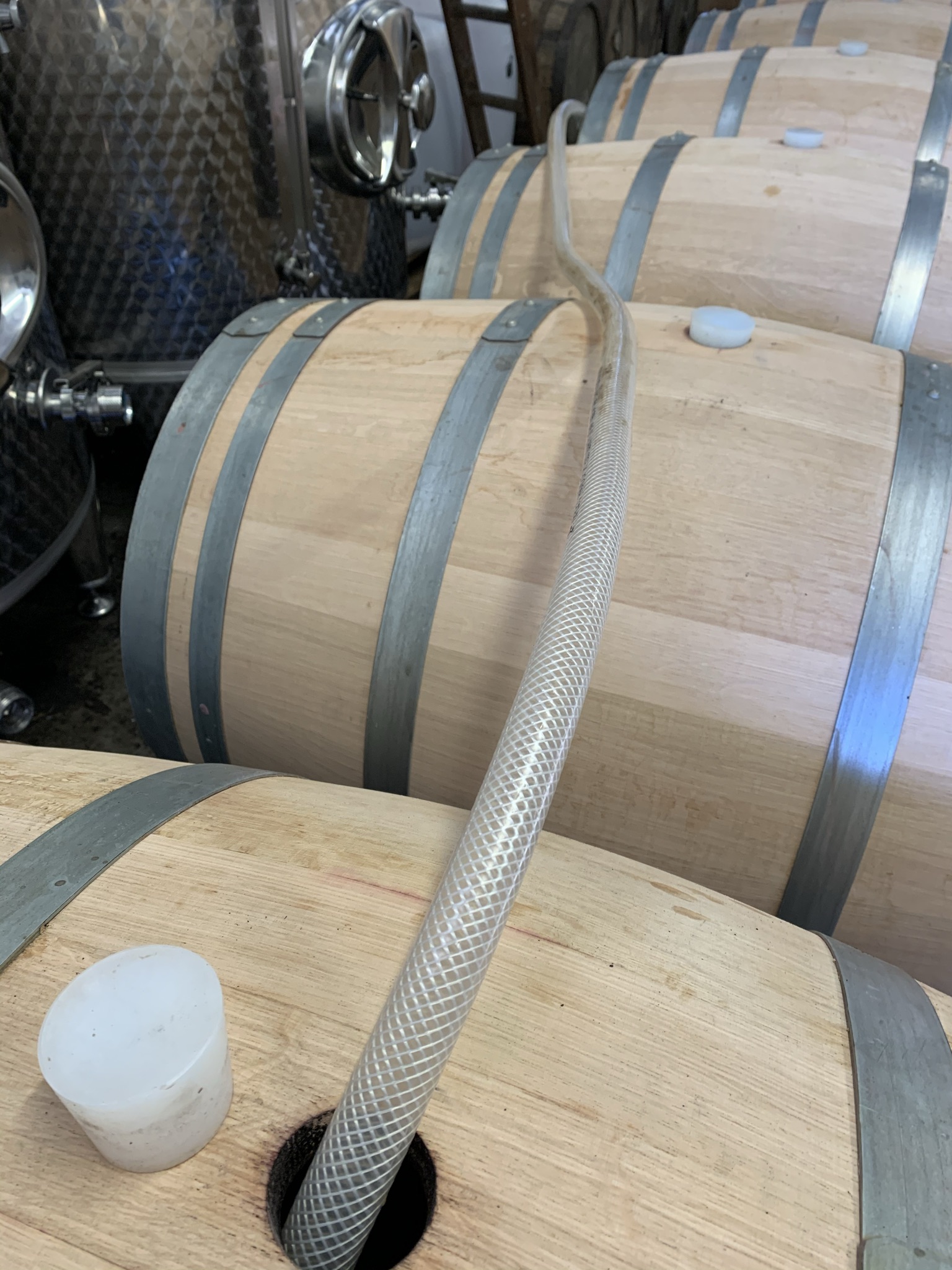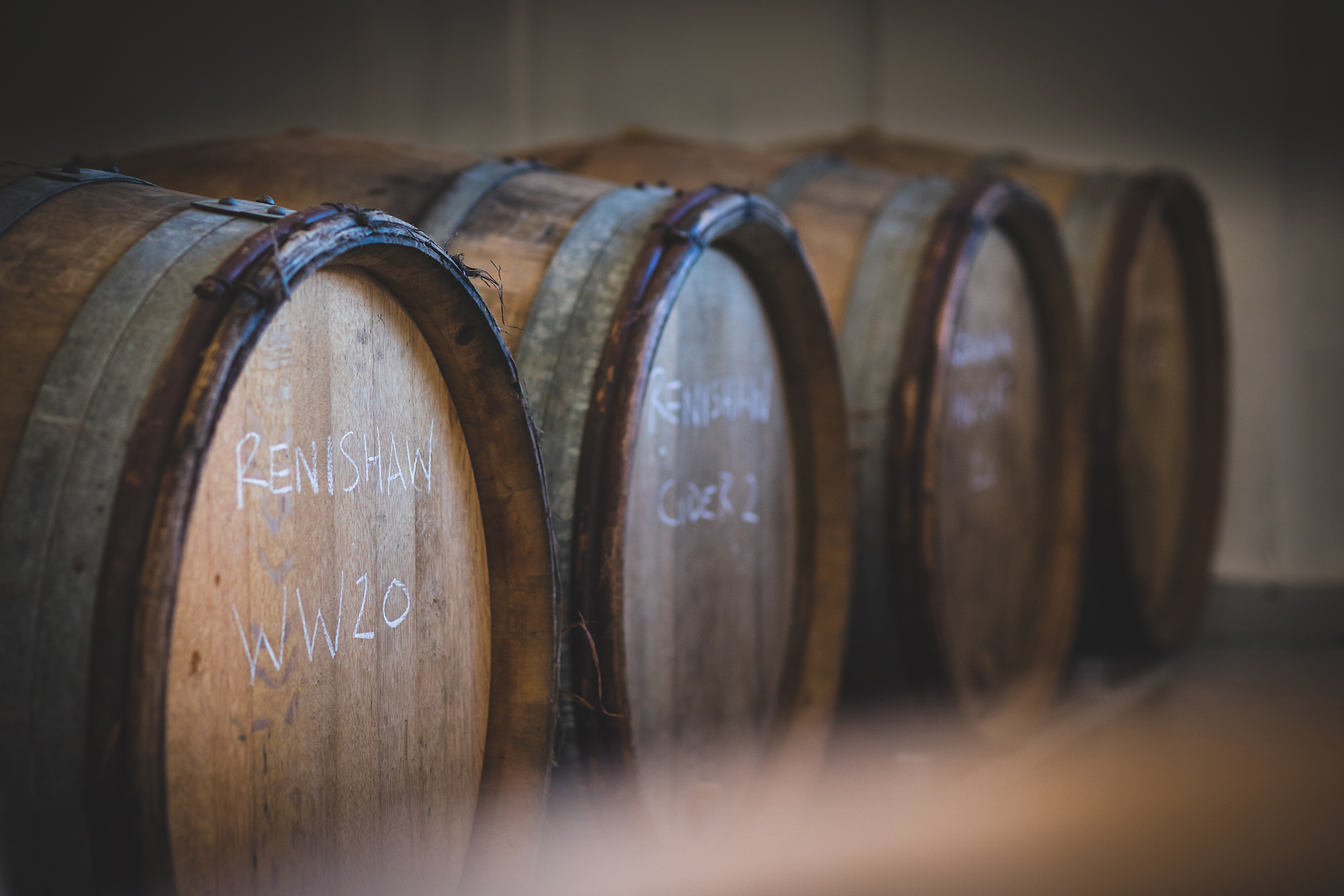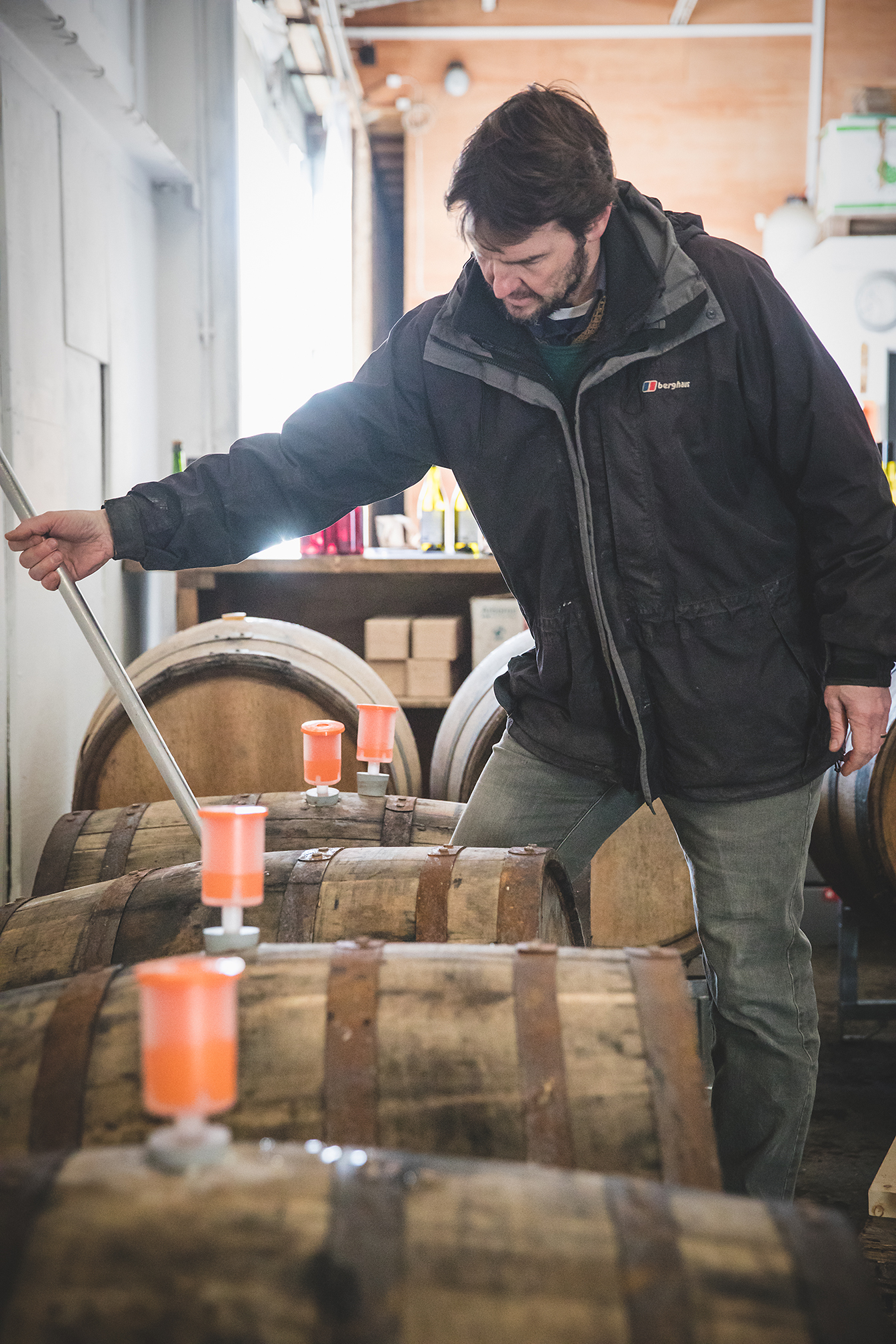Barrels in the distant past were typically used to store and transport goods, including wine and although we have more convenient means of storing wine, oak barrels are still a feature in many wineries. A well-lit cellar stacked with barrels certainly adds to the romance of wine, but Vineyard finds out how oak barrels influence the sensory profile, the wine quality and if they can be replaced by staves, chips or other oak alternatives.
The sensory story
Dr Heber Rodrigues is a researcher and lecturer at the UK Centre for Excellence on Wine Research, at Plumpton College, Sussex, where he focusses on the mechanisms of perception and wine sensory evaluation. “Oak is one of the most important external influencers on the sensory matrix of a wine. This can change everything, for example, red wine maturation in oak barrels helps the stabilisation of colour, modifies its aromatic profile and its flavours. It helps reduce vegetative and green notes, reduces astringency so improving the sensory palatability of the wine.”
Charlie Holland, Winemaker at Gusbourne Estate, in Kent, recognises the attributes and contribution to character from the use of oak. “In our sparkling wines we use the old, neutral oak to provide mid-palate weight, texture and richness to the wines. We also add 2-3% of new oak to add ripeness and spice. As we are only adding 2-3% of new oak, we want this to be quite impactful, so use a high toast level.”
James Lambert, Head Winemaker at Lyme Bay Winery in Devon, uses a range of different formats and ages of barrels, depending on the wine. “With the new barrels the contribution depends on toast and size. For us, the larger barrels give a more subtle range of flavours, derived from oak, and a silkier tannic structure than the 225L. The 225L barrels definitely tend to a quicker extraction of flavour and tannin. Flavours, tannin and intensity all depends on toast and size – as well as the wine that’s in them. One thing we insist on is that for Chardonnay and Pinot, MLF (malolactic fermentation) is carried out in barrel – we have certainly found that everything is more integrated that way.
“We also use a selection of older barrels. Depending on the age, very little ‘oak’ character is derived from the barrel. However, we do value them for the added texture and complexity – both through micro-oxygenation and also in the higher surface area relative to volume of lees. Barrels also provide the opportunity for bâtonnage, which subsequently gives a fuller mouthfeel and a more complex array of flavours,” added James.
“I am fortunate to work with Seguin Moreau, and have both new and renovated oak barrels, plus a small selection of older barrels (10 years plus) – and even some bourbon barrels. Oak used well enhances and improves the finished wine; it adds extra complexity and really layers up the flavours,” commented Kieron Atkinson, Winemaker for the English Wine Project.
“I find that fermenting in oak has the largest impact – but how much oak can the wine handle? New oak has the ability to overpower some English wines, so it is best used as a blending tool with wines produced in stainless steel. Renovated oak allows the wine to develop whilst picking up oak flavours, that show off the wine’s subtlety and complexity. Used oak (up to three vintages) can also be great – but be careful where it is sourced and ensure that the barrel has not been empty for long,” Kieron added.
Dr Akshay Baboo, also part of the team at the UK Centre for Excellence on Wine Research, at Plumpton College, currently focusses his research on wine chemistry and ageing. “The timing of the use of oak will affect both the colour and aroma compounds. Multiple studies have noted that oak ageing will cause a loss in the intensity of colour and this is entirely expected given that ageing, in any case, will cause a loss of colour due to the polymerisation of pigments. In the case of oak, studies also show this will be further exacerbated, as the quantity of tannins available for polymerisation will increase.
“In terms of aroma compounds, multiple studies have shown that ageing in general diminishes the esters (compounds responsible for fruity aromas) as they are hydrolysed in the presence of alcohol and are converted to aldehydes (aromas of bruised apples, vanilla, toasted nuts, empyrumatic aromas etc). The void in perception, left by the loss of the esters is filled by compounds extracted from oak. However, a recent study has shown that the ageing of wine pre and post MLF has significant differences. The wines that underwent MLF post ageing showed a greater propensity to regain fruity aromas than the converse. Studies have also shown that fermentations in oak barrels can lead to the production of some interesting reductive aromas such as furfurylthiol (coffee).
“Oak barrels are expensive, and so are oak alternatives, but they do help differentiate your product, and the choices are many. It is my belief that oak can create a significant value addition to many wines,” added Akshay.
On a practical note, David Cowderoy, consultant winemaker, generally advises, that, “as a rule of thumb the contribution of new oak to aromas and flavours is around 50%, but this drops to about 30% for a one-year-old barrel, and to 20% for a two-year-old barrel. A barrel older than two years will contribute very little in terms of flavour and aroma, but re-shaving and re-toasting can bring this back to around 20%. The other benefit of using oak is micro-oxygenation – new barrels allow around 20 to 30mg/l/year and an older barrel maybe 10 to 15mg/l/year. There is a sulphite pick up, which winemakers need to be aware of as this can inhibit MLF.”
Selecting oak
Barrel size, age, toast level and origin are all considerations that will influence sensory attributes, so the selection process can be daunting – especially for use with some of the delicate and aromatic still wines of the UK.
“The type of oak, their toasting level and their time of use will impact markedly the sensory matrix of a wine. Vanillin and smoke flavours (furans, volatile phenols) generally increase with toasting, whereas whiskey lactone decreases thereby increasing the perceived complexity of the sensory matrix. Studies have shown that wood also releases some non-volatile substances such as ellagitannins into the wine, impacting the taster’s mouthfeel perception,” explained Heber.
“When selecting oak, avoid compromising on quality – I think it’s always better to buy less, but buy better,” advises David. “The quality factors and variation in barrel attributes are influenced by the origin of the oak, which can be France, America, or Eastern Europe, and the tightness of the grain – which is influenced by the growth rate of the tree. Then during barrel production, the stave drying time, as this is when the tannins change to lose their green and austere characters and the toasting level. The toasting intensity has a huge impact on the aromatics and flavour characteristics imparted by the barrel. So, all these variables result in some quite marked and interesting differences in barrels from different coopers, or tonnelleries. Barrel selection will depend on the wine type, the variety and organoleptic criteria sought – as well as budget.”
“We use a wide range of tonnelleries, forests and toast levels to give us as many blending options as possible. We have been developing our barrel inventory over the last 8 years so have a good balance of new and old oak,” commented Charlie. “We have started moving more towards 500L puncheons as opposed to barriques as they seem to improve oak integration. Also, we have made a barrel out of oak from the Gusbourne Estate. Only one year of use to date, but hugely exciting and demonstrates a different aromatic profile compared to its French counterparts,” he added.
James selects oak based on the style of wine. “We tend to use one cooper only per vintage and use different size barrels and different levels of toast to create nuance and complexity within each wine. About 99% of all our oak, new and old, is French. However, we have experimented with one barrel of American oak for our Pinot Noir, within the blend, and also a couple of barrels of Eastern European oak. For the 2021 vintage we will be using an English oak barrel. In the first instance it will be a trial, but we hope this will create a more sustainable approach for us in the future,” commented James.
Disadvantages of barrels
Apart from the cost, which is significant, and the fact that a barrel releases most of the oak flavours in the first couple of years, they can be challenging to keep clean, hard to store when empty, and can harbour unwanted microbes, such as Brettanomyces – which contributes an unmistakable, and undesirable, hamster cage aroma to the wine. “Old barrels can be one source of infection. It (bret) also causes a loss of fruit – a ‘drying’ of wine – and once in a winery, can be very hard to get rid of,” explained David.
“Oak can have a lot of negative influences from a sensory point of view. Over oaked white wines lack freshness and vivacity, are less complex and less mineral. In the case of red wines, over oaking results in an increase the perception of astringency, spiciness and wood, decreasing the overall appreciation of the wine. We need a balance of sensory descriptors to increase the perception of quality of the wine – and a good sensory experience,” Heber added.
“Oak barrels add complexity and nuance – and can increase the quality of certain varietals. They ‘premiumise’ the wine and give a perception of quality. Barrels also provide flexibility and choices for the blend, ‘marketing value’. But this all comes with a price – other than their cost – there is the cleaning, moving, wine losses, and they are labour intensive with tasks such as topping up,” commented James.
Barrel maintenance
“Barrels can be used for a number of years, but they must be cared for well. When new barrels arrive, the staves have gaps between them, and this is certainly not water-tight. So, before filling the barrels with wine, the wood must be swollen, to ensure the staves are confluent. The barrel can be filled with room temperature water (not chlorinated) and kept topped up until the major leaks stop,” explained Akshay.
“They must be steamed every year before filling, till the condensate running out of the barrel registers 80°C. At the end of each use, the barrel must be thoroughly washed, steamed, and sealed (air-tight) with a sulphur candle lit on the inside. This ensures that the insides of the barrels are kept sterile as burning sulphur in limited oxygen creates SO2 and if a small amount of moisture is present (from the washing) H2SO3 or sulphurous acid is produced that ensures that the insides remain clean. Barrels must be washed with water devoid of chlorine – to prevent the possibility of formation of trichloroanisole (TCA), or cork taint. On the same theme, no halogenated cleaners should be used.
Cleaned barrels need to be stored in a high humidity (70%) environment if you intend to fill it more than once per vintage, and do not want to go through the rigmarole of rehydration of the wood,” Akshay added.
Oak alternatives
Oak barrels add to the wine’s flavour profile, and to the development of the wine with their slow oxygen ingress. But can these benefits be achieved quicker and cheaper with the use of oak alternatives – such as oak chips or staves – along with the use of micro-oxygenation? Winemakers may not own up to using these products, but the cost-savings must be attractive – even if stacks of oak chips are not as pleasing as barrel halls.
The quality of the oak is just as important with oak alternative products as it is with barrels,” commented David. “Consider the origins, the drying process and the toast level – and quality from suppliers is variable. There are several formats – granules, chips, staves, dominos to name a few – they all have different extraction rates and integration properties.
“When used correctly there are certain advantages, aside from the economics. One is flexibility, as different levels of toast can be used to fine tune in order to achieve a desired profile and complexity. Alternatives are very useful for providing a range of blending components. They can be added during fermentation, and also if needed, to add some additional ‘touching up’, at the end. For red wine production I would combine the use of oak alternatives with micro-oxygenation. Also wineries must be aware of the regulations when it comes to oak use and labelling – always check with Wine Standards,” David added.
Mark Crumpton, Business Development Manager at Bruni Erben, supplies the Nobile range of oak alternatives from Laffort. “We provide an extensive range of oak alternatives, the primary format types with various toasting levels are chips, blocks and staves, as well as zig-zag chains for barrels – and a very exciting innovation incorporating the wood into the bidule. Oak alternatives give more flexibility and precision in flavour profile, but the limitation is around the micro-oxygenation effect that you achieve with a barrel compared to staves in tank. However, there are more options for blending with oak alternatives, as a winemaker can easily mix and match a certain volume of one wine profile with a percentage of another – and explore complimentary flavours you might not be able to achieve with just one barrel of a certain toasting,” commented Mark.
“In fact a study has found that with oak chips there is an increase in the production of aromatic higher alcohols (fusel oils) such as isobutanol (ethereal, or vinous); 3methyl-1-butanol (whiskey like or cognac like); along with acetates like isoamyl acetate (banana); 2-phenylethylacetate (roses or honey); and esters such as ethyl caproate (apple) and ethyl lactate (butterscotch),” explained Akshay.
“Oak alternatives have a high surface area to volume ratio, causing them to very quickly release oak into the wine. As oak flavours can dominate subtle grape or fermentation aromas, I recommend starting small by adding some miniature sample staves to a 75cl bottle of base wine. This gives the opportunity to explore the flavour profiles and extractions over time before scaling up. It’s good to be aware that using oak during fermentation can accelerate the extraction as the temperatures are typically higher than stored wine,” Mark added.
Kieron Atkinson has started some trials with oak alternatives. “So far, these trials have consisted of demi-john trials only, but they have produced very interesting results. They are an extremely cost-effective alternative to new oak barrels whilst achieving similar results. Alternative oak products allow for a blending option without having to deal with barrels and the potential risk of spoilage. So the advantages are accurate and repeatable results, flavours and cost effectiveness.”
MOX
Studies have shown that micro-oxygenation (MOX) has multiple effects on the stability and the REDOX (reduction-oxidation) potential of the wine, and mediates the formation of 5-hydroxymethylfurfural, an intermediate in the Maillard reaction. MOX also plays a significant role in the conversion of gallic and caffeic acids (very harsh tannins) extracted from oak, into their dimers (which are softer, more pleasant tannins). It has also been theorised in various studies that a similar interaction might occur between the native grape tannins and also in the interaction of the grape and oak tannins, in all cases mediated by MOX,” explained Akshay.
The ‘wow’ factor
Wineries around the world showcase their barrel halls and cellars to visitors – for a reason – they convey the perception of quality. “Cellar door sales rely on appearance as much as the wines inherent qualities and barrels are an important part of this story,” commented Kieron.
At Gusbourne, as well as our barrels, we have some large format foudres – which are more like furniture and the centrepiece of the winery,” added Charlie.
“At Lyme Bay, we only have selected visitors at present. However, we definitely see a big marketing value in allowing visitors to see them when we are set up to do so. Seeing a well looked after cellar with rows of oak immediately generates the idea that the wines are going to be premium, and that they have been made with a high level of care and attention with little compromise,” said James.
Photos: John Anderson Photography







